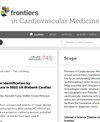1990 年至 2019 年 204 个国家和地区高血压心脏病、风险因素和年龄段队列模型的影响:2019 年全球疾病负担研究的全球视角
IF 2.8
3区 医学
Q2 CARDIAC & CARDIOVASCULAR SYSTEMS
引用次数: 0
摘要
背景高血压性心脏病(HHD)是由高血压引起的内脏损害导致的全球重大公共卫生问题。本研究旨在研究高血压性心脏病的全球影响、风险因素以及1990年至2019年的年龄-时期-队列(APC)模型。方法利用2019年全球疾病负担数据评估经年龄调整的高血压性心脏病患病率、残疾调整生命年(DALYs)、死亡率以及高血压性心脏病风险因素的贡献率(95%不确定区间(UIs))。结果2019年,1860万例HHD流行病例导致116万人死亡,2151万人残疾调整生命年。经年龄调整后,患病率为每 10 万人 233.8 例(95%UI = 170.5-312.9),死亡率为每 10 万人 15.2 例(11.2-16.7),残疾调整寿命年数为每 10 万人 268.2 例(204.6-298.1)。从地区来看,库克群岛(703.1)、约旦(561.6)和科威特(514.9)是2019年HHD年龄标准化发病率最高的地区。拉丁美洲安第斯地区(16.7%)、撒哈拉以南非洲西部地区(5.6%)和撒哈拉以南非洲东部地区(4.6%)的HHD发病率大幅上升。各国的死亡率差异很大。收缩压升高和高体重指数等风险因素对残疾调整寿命年数的影响很大,尤其是女性。APC模型显示死亡率与年龄之间存在关联,随着时间的推移,死亡风险会降低,出生较晚的人群存活率会提高。结论尽管发病率有所降低,但高血压和心脏病仍然是一个重要的公共卫生问题,尤其是在社会人口指数较低的国家。为了减轻高血压和心脏病的影响,预防工作应集中在控制高血压、减轻体重和改善生活方式上。本文章由计算机程序翻译,如有差异,请以英文原文为准。
Impact of hypertensive heart disease, risk factors, and age-period-cohort models across 204 nations and regions from 1990 to 2019: a global perspective from the 2019 global burden of disease study
BackgroundHypertensive heart disease (HHD) is a major global public health issue resulting from hypertension-induced end-organ damage. The aim of this study was to examine the global impact, risk factors, and age-period-cohort (APC) model of HHD from 1990 to 2019.MethodsData from the 2019 Global Burden of Disease were used to assess age-adjusted HHD prevalence, disability-adjusted life years (DALYs), mortality rates, and contributions of HHD risk factors with 95% uncertainty intervals (UIs). APC models were used to analyze global age, period, and cohort mortality trends for HHD.ResultsIn 2019, 18.6 million prevalent HHD cases led to 1.16 million fatalities and 21.51 million DALYs. Age-adjusted rates were 233.8 (95%UI = 170.5–312.9) per 100,000 individuals for prevalence, 15.2 (11.2–16.7) for mortality, and 268.2 (204.6–298.1) for DALYs. Regionally, the Cook Islands (703.1), Jordan (561.6), and Kuwait (514.9) had the highest age-standardized incidence of HHD in 2019. There were significant increases in HHD prevalence in Andean Latin America (16.7%), western sub-Saharan Africa (5.6%), and eastern sub-Saharan Africa (4.6%). Mortality rate varied widely among countries. Risk factors like elevated systolic blood pressure and high body mass index significant influenced DALY rates, especially in females. The APC model revealed an association between mortality rates and age, with a decreasing mortality risk over time and improved survival rates for a later birth cohort.ConclusionsDespite the reduction in prevalence, HHD remains a significant public health issue, particularly in nations with low sociodemographic indices. To alleviate the impact of HHD, prevention efforts should concentrate on the management of hypertension, weight loss, and lifestyle improvement.
求助全文
通过发布文献求助,成功后即可免费获取论文全文。
去求助
来源期刊

Frontiers in Cardiovascular Medicine
Medicine-Cardiology and Cardiovascular Medicine
CiteScore
3.80
自引率
11.10%
发文量
3529
审稿时长
14 weeks
期刊介绍:
Frontiers? Which frontiers? Where exactly are the frontiers of cardiovascular medicine? And who should be defining these frontiers?
At Frontiers in Cardiovascular Medicine we believe it is worth being curious to foresee and explore beyond the current frontiers. In other words, we would like, through the articles published by our community journal Frontiers in Cardiovascular Medicine, to anticipate the future of cardiovascular medicine, and thus better prevent cardiovascular disorders and improve therapeutic options and outcomes of our patients.
 求助内容:
求助内容: 应助结果提醒方式:
应助结果提醒方式:


